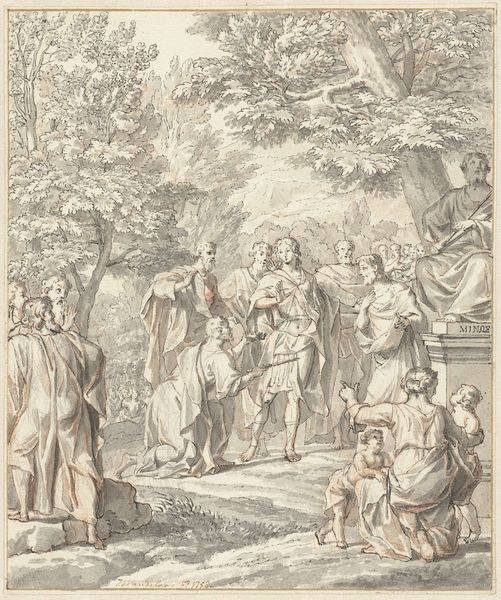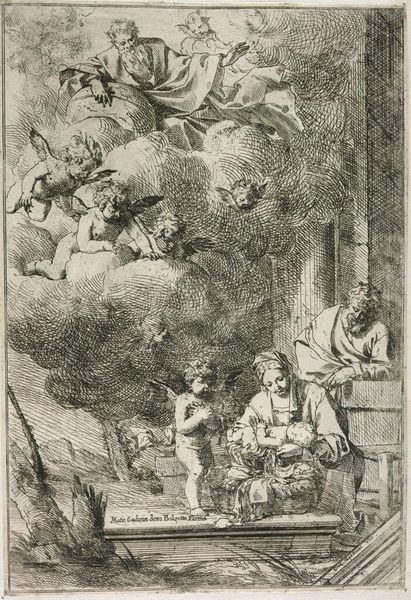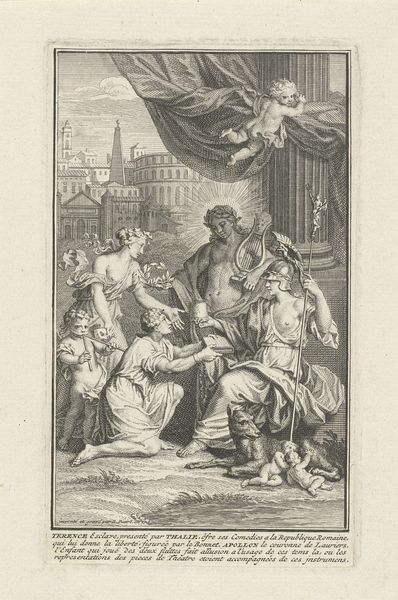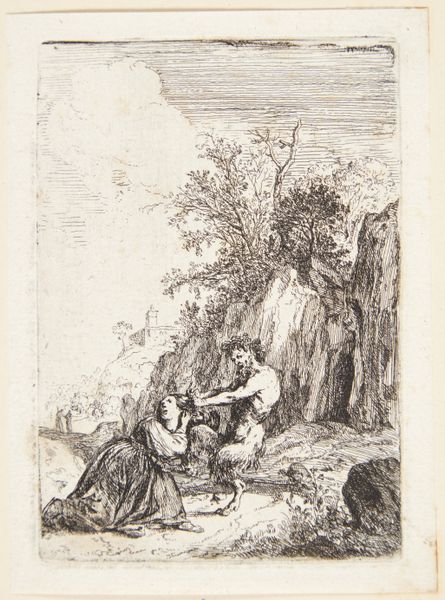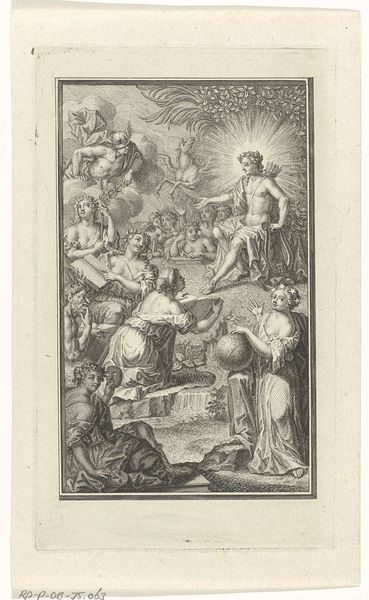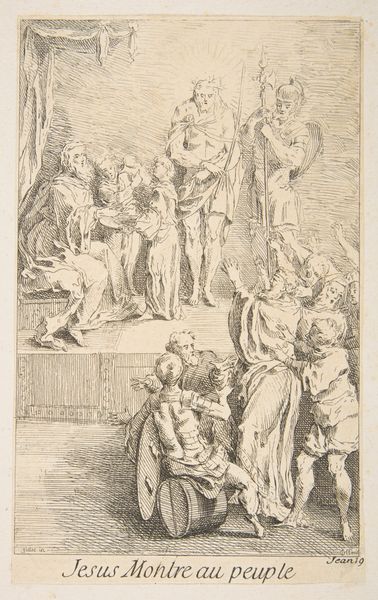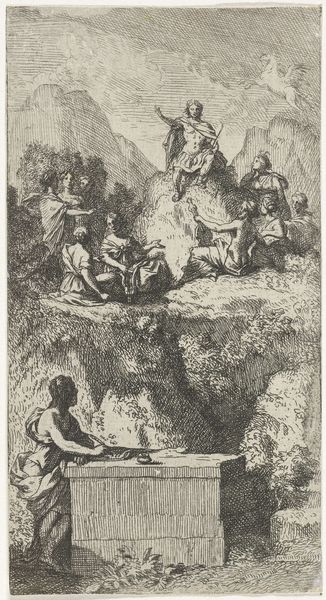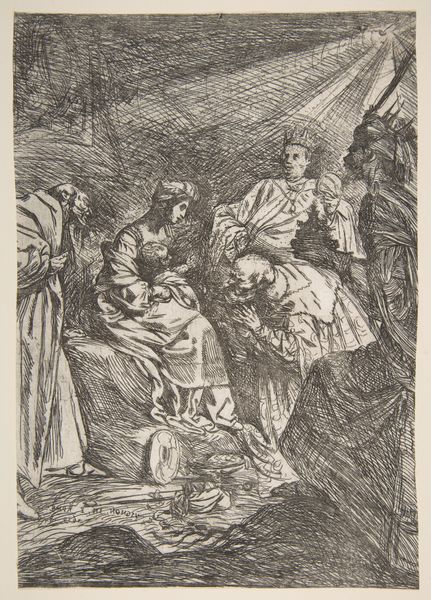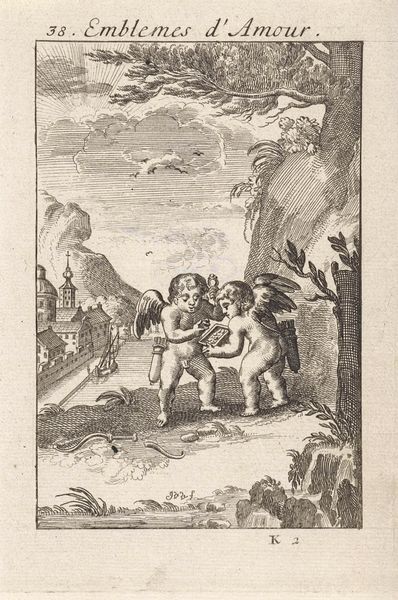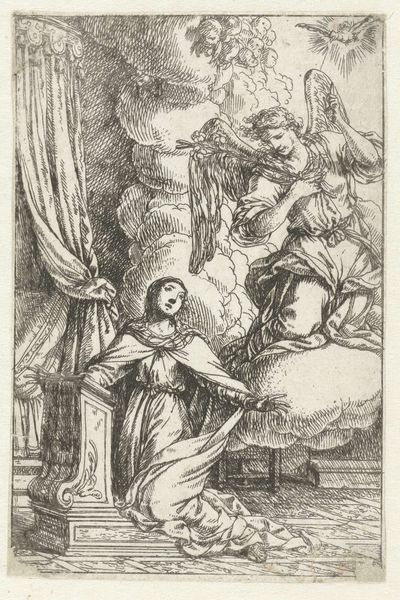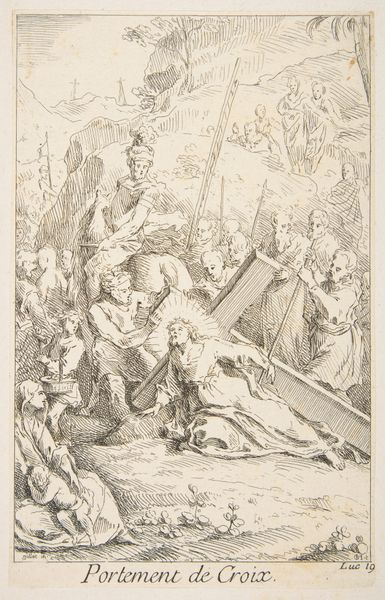
The Banquet of Anthony and Cleopatra 1763 - 1764
0:00
0:00
Dimensions: sheet: 6 13/16 x 4 13/16 in. (17.3 x 12.3 cm) image: 5 7/8 x 4 1/4 in. (15 x 10.8 cm)
Copyright: Public Domain
Curator: Jean-Honoré Fragonard created this etching, "The Banquet of Anthony and Cleopatra", between 1763 and 1764. It’s currently held at the Metropolitan Museum of Art. Editor: Immediately, the delicate, almost scratchy lines jump out. It has this unfinished quality, but the scene still feels incredibly rich. All that texture from just an etching! Curator: Well, consider the era! The 18th century print market drove innovation. Artists like Fragonard were expanding the reach of painting, enabling their distribution as affordable decoratives in a vastly expanded commercial market. These images spread knowledge, reinforced political power and morality tales of the ruling elite to an expanding public viewership. Editor: It’s interesting to think about this medium in terms of labor too. Etching requires a specific set of skills, acid-resist application, careful scoring of lines, the biting process, and then ultimately the printing, the inking and press work; quite involved, but so unlike painting. Did he do his own printing here, or were workshops typically involved by then? Curator: It’s likely that a workshop handled the printing, though Fragonard, familiar with all phases, designed with distribution and interpretation always in mind. This print references painting but creates an artwork on paper with a character of its own; available in many impressions at much lower costs for new buyers and collectors who valued “painting.” It promoted Fragonard’s skill while broadcasting classical subjects with serious intent, Editor: And the banquet scene itself, what significance does that story hold? Curator: The banquet of Anthony and Cleopatra has been fodder for artists across centuries, functioning in the 18th century as cautionary tales of reckless expenditure. Think about it: wealth and power squandered in pursuit of romantic obsession. Here it serves not only as decoration, but as a constant social and political reminder. Editor: It is impressive how such delicate lines and gradations in tone still create a real sense of volume and atmosphere. This almost fleeting moment still manages to speak volumes about craftsmanship and class dynamics. I find it more interesting the more I think about its production, market and intention. Curator: Exactly, and it underscores how art like this played a vital role in disseminating cultural narratives. So much more than pretty decoration.
Comments
No comments
Be the first to comment and join the conversation on the ultimate creative platform.
